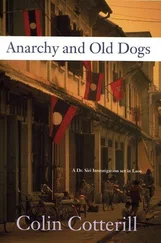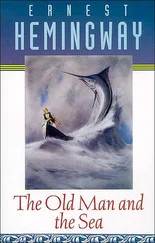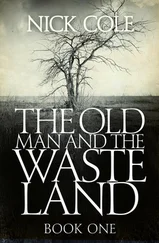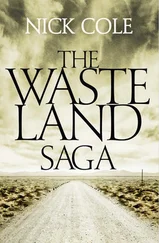Thomas Frost - The Old Showmen and the Old London Fairs
Здесь есть возможность читать онлайн «Thomas Frost - The Old Showmen and the Old London Fairs» — ознакомительный отрывок электронной книги совершенно бесплатно, а после прочтения отрывка купить полную версию. В некоторых случаях можно слушать аудио, скачать через торрент в формате fb2 и присутствует краткое содержание. Жанр: foreign_antique, foreign_prose, на английском языке. Описание произведения, (предисловие) а так же отзывы посетителей доступны на портале библиотеки ЛибКат.
- Название:The Old Showmen and the Old London Fairs
- Автор:
- Жанр:
- Год:неизвестен
- ISBN:нет данных
- Рейтинг книги:4 / 5. Голосов: 1
-
Избранное:Добавить в избранное
- Отзывы:
-
Ваша оценка:
- 80
- 1
- 2
- 3
- 4
- 5
The Old Showmen and the Old London Fairs: краткое содержание, описание и аннотация
Предлагаем к чтению аннотацию, описание, краткое содержание или предисловие (зависит от того, что написал сам автор книги «The Old Showmen and the Old London Fairs»). Если вы не нашли необходимую информацию о книге — напишите в комментариях, мы постараемся отыскать её.
The Old Showmen and the Old London Fairs — читать онлайн ознакомительный отрывок
Ниже представлен текст книги, разбитый по страницам. Система сохранения места последней прочитанной страницы, позволяет с удобством читать онлайн бесплатно книгу «The Old Showmen and the Old London Fairs», без необходимости каждый раз заново искать на чём Вы остановились. Поставьте закладку, и сможете в любой момент перейти на страницу, на которой закончили чтение.
Интервал:
Закладка:
Thomas Frost
The Old Showmen and the Old London Fairs
PREFACE
Popular amusements constitute so important a part of a nation’s social history that no excuse need be offered for the production of the present volume. The story of the old London fairs has not been told before, and that of the almost extinct race of the old showmen is so inextricably interwoven with it that the most convenient way of telling either was to tell both. An endeavour has been made, therefore, to relate the rise, progress, and declension of the fairs formerly held in and about the metropolis as comprehensively and as thoroughly as the imperfect records of such institutions render possible; and to weave into the narrative all that is known of the personal history of the entertainers of the people who, from the earliest times to the period when the London fairs became things of the past, have set up shows in West Smithfield, on the greens of Southwark, Stepney, and Camberwell, and in the streets of Greenwich and Deptford. Those who remember the fairs that were the last abolished, even in the days of their decline, will, it is thought, peruse with interest such fragments of the personal history of Gyngell, Scowton, Saunders, Richardson, Wombwell, and other showmen of the last half century of the London fairs, to say nothing of the earlier generations of entertainers, as are brought together in the following pages.
The materials for a work of this kind are not abundant. The notices of the fairs to be found in records of the earlier centuries of their history are slight, and more interesting to the antiquary than to the general reader. Newspapers of the latter half of the seventeenth century, and the first half of the eighteenth, afford only advertisements of the amusements, and of the showmen of the former period we learn only the names. During the latter half of the last century, the showmen seldom advertised in the newspapers, and few of their bills have been preserved. No showman has ever written his memoirs, or kept a journal; and the biographers of actors who have trodden the portable stages of Scowton and Richardson in the early years of their professional career have failed to glean many incidents of their fair experiences. All that can be presented of the personal history of such men as Gyngell, Scowton, Richardson, and Wombwell, has been gathered from the few surviving members of the fraternity of showmen, and from persons who, at different periods, and in various ways, have been brought into association with them. If, therefore, no other merit should be found in the following pages, they will at least have been the means of preserving from oblivion all that is known of an almost extinct class of entertainers of the people.
CHAPTER I
Origin of Fairs – Charter Fairs at Winchester and Chester – Croydon Fairs – Fairs in the Metropolis – Origin of Bartholomew Fair – Disputes between the Priors and the Corporation – The Westminster Fairs – Southwark Fair – Stepney Fair – Ceremonies observed in opening Fairs – Walking the Fair at Wolverhampton – The Key of the Fair at Croydon – Proclamation of Bartholomew Fair.
There can be no doubt that the practice of holding annual fairs for the sale of various descriptions of merchandise is of very great antiquity. The necessity of periodical gatherings at certain places for the interchange of the various products of industry must have been felt as soon as our ancestors became sufficiently advanced in civilisation to desire articles which were not produced in every locality, and for which, owing to the sparseness of the scattered population, there was not a demand in any single town that would furnish the producers with an adequate inducement to limit their business to one place. Most kinds of agricultural produce might be conveyed to the markets held every week in all the towns, and there disposed of; but there were some commodities, such as wool, for example, the entire production of which was confined to one period of the year, while the demand for many descriptions of manufactured goods in any one locality was not sufficient to enable a dealer in them to obtain a livelihood, unless he carried his wares from one town to another. What, therefore, the great fair of Nishnei-Novgorod is at the present day, the annual fairs of the English towns were, on a less extensive scale, during the middle ages.
One of the most ancient, as well as the most important, of the fairs of this country was that held on St. Giles’s Hill, near Winchester. It was chartered by William I., who granted the tolls to his cousin, William Walkelyn, Bishop of Winchester. Its duration was originally limited to one day, but William II. extended it to three days, Henry I. to eight, Stephen to fourteen, and Henry II. (according to Milner, or Henry III., as some authorities say) to sixteen. Portions of the tolls were, subsequently to the date of the first charter, assigned to the priory of St. Swithin, the abbey of Hyde, and the hospital of St. Mary Magdalene. On the eve of the festival of St. Giles, on which day the fair commenced, the mayor and bailiffs of Winchester surrendered the keys of the four gates of the city, and with them their privileges, to the officers of the Bishop; and a court called the Pavilion, composed of the Bishop’s justiciaries, was invested with authority to try all causes during the fair. The jurisdiction of this court extended seven miles in every direction from St. Giles’s Hill, and collectors were placed at all the avenues to the fair to gather the tolls upon the merchandise taken there for sale. All wares offered for sale within this circle, except in the fair, were forfeit to the Bishop; all the shops in the city were closed, and no business was transacted within the prescribed limits, otherwise than in the fair. It is probable, however, that most of the shopkeepers had stalls on the fair ground.
This fair was attended by merchants from all parts of England, and even from France and Flanders. Streets were formed for the sale of different commodities, and distinguished by them, as the drapery, the pottery, the spicery, the stannary, etc. The neighbouring monasteries had also their respective stations, which they held under the Bishop, and sometimes sublet for a term of years. Milner says that the fair began to decline, as a place of resort for merchants, in the reign of Henry VI., the stannary, that is, the street appointed for the sale of the products of the Cornish mines, being unoccupied. From this period its decline seems to have been rapid, owing probably to the commercial development which followed the extinction of feudalism; though it continued to be an annual mart of considerable local importance down to the present century.
The description of this fair will serve, in a great measure, for all the fairs of the middle ages. Some of them were famous marts for certain descriptions of produce, as, for examples, Abingdon and Hemel Hempstead for wool, Newbury and Royston for cheese, Guildford and Maidstone for hops, Croydon and Kingston summer fairs for cherries; others for manufactured goods of particular kinds, as St. Bartholomew’s, in the metropolis, for cloth (hence the local name of Cloth Fair), and Buntingford for hardwares. More usually, the fair was an annual market, to which the farmers of the district took their cattle, and the merchants of the great towns their woollen and linen goods, their hardwares and earthenwares, and the silks, laces, furs, spices, etc., which they imported from the Continent. These, as at Winchester, were arranged in streets of booths, fringed with the stalls of the pedlars and the purveyors of refreshments, for the humbler frequenters of the fair. The farmers, the merchants, and the customers of both, resorted to the more commodious and better-provided tents, in which, as Lydgate wrote of Eastcheap in the fifteenth century,
Читать дальшеИнтервал:
Закладка:
Похожие книги на «The Old Showmen and the Old London Fairs»
Представляем Вашему вниманию похожие книги на «The Old Showmen and the Old London Fairs» списком для выбора. Мы отобрали схожую по названию и смыслу литературу в надежде предоставить читателям больше вариантов отыскать новые, интересные, ещё непрочитанные произведения.
Обсуждение, отзывы о книге «The Old Showmen and the Old London Fairs» и просто собственные мнения читателей. Оставьте ваши комментарии, напишите, что Вы думаете о произведении, его смысле или главных героях. Укажите что конкретно понравилось, а что нет, и почему Вы так считаете.












